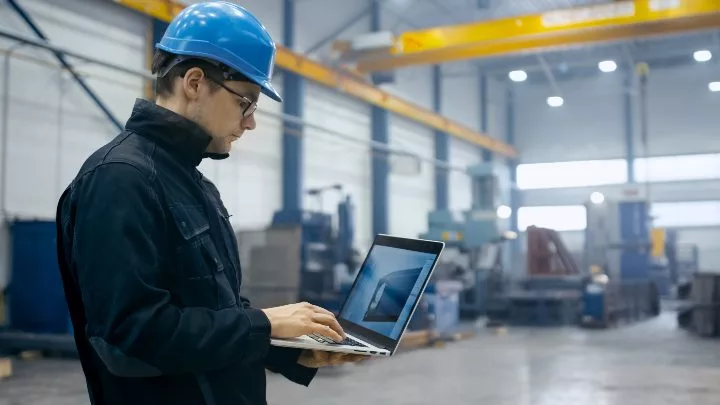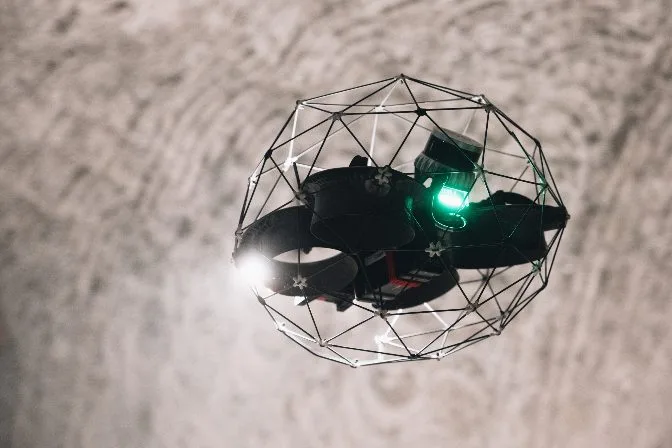Maintenance management is essentially a structured system aimed at preserving and optimally maintaining the physical assets and resources of a company. It involves keeping tabs on equipment, workforce, contractors, and the related expenses tied to those assets. By doing so, maintenance management systems not only help businesses save money on repairs and inspections but also ensure that both employees and machinery remain safe, efficient, and productive. Take a look at the image below to visualize how maintenance management systems work in practice. These systems track various elements of a company’s infrastructure, ensuring that all operations run smoothly and efficiently. Maintenance management software plays a crucial role in minimizing equipment failure and reducing production downtime. It also helps in managing preventive maintenance schedules, which is vital for long-term operational success. Practices may differ across industries, but the overarching goal remains consistent: to reduce resource wastage. By optimizing production at every level, maintenance management systems strive to keep a company’s physical resources reliable and available at all times. This modern approach combines traditional methods with advanced technology, utilizing different systems, personnel, and computerized management software to achieve maximum efficiency. Today’s maintenance management is more sophisticated than ever, integrating cutting-edge tools to streamline processes and enhance productivity. For individuals outside the maintenance industry, equipment failure might seem like a minor inconvenience—a delayed subway ride or a short power outage. However, for large corporations, unplanned equipment downtime can be catastrophic, leading to significant financial losses. According to Aberdeen Strategy and Research, unexpected equipment downtime can cost a company approximately $260,000 per hour in lost revenue. This is precisely the type of situation that maintenance management systems aim to prevent. From transportation and IT to engineering, oil and gas, energy, and healthcare, many industries rely on maintenance management software to avoid such massive revenue losses. However, saving money is just one of the many benefits of using maintenance management systems. Here are five compelling reasons why maintenance management is critical: As noted earlier, maintenance management systems can significantly reduce unplanned equipment downtime. This saves companies thousands, if not millions, in potential revenue losses. By planning equipment shutdowns during off-hours or non-peak seasons, inspectors, repair technicians, and maintenance managers can carry out their duties without disrupting normal operations. Proper maintenance management ensures that most, if not all, downtime is anticipated and scheduled accordingly. In addition to reducing downtime, maintenance management systems also extend the life of machinery. This delay in replacement reduces costs and provides companies with more financial flexibility. When equipment is consistently inspected and maintained, it operates more reliably and lasts longer. By ensuring that machinery is utilized to its full potential before retirement, maintenance management software helps minimize waste and optimize resource usage. One well-maintained piece of equipment can outlast multiple iterations of poorly maintained ones. Therefore, it is both strategically sound and cost-effective to adopt maintenance management software to prolong the lifespan of assets. When equipment functions as intended, employees can focus on higher-priority tasks. Efficient maintenance management reduces the time spent on administrative work, such as filing papers or sorting through maintenance requests. Additionally, with fewer emergencies to address, employees can concentrate on preventive measures rather than reactive repairs. This not only cuts costs but also alleviates stress for individual workers. Scheduled inspections are generally less demanding than urgent fixes, and with proper maintenance management, the latter becomes a rarity. As a result, a continuous cycle of optimization and efficiency emerges, driving overall productivity upward. Every industry—from healthcare to transportation—has regulations and standards that must be adhered to avoid penalties or accidents. High-quality maintenance management systems assist companies in staying compliant with these requirements. By accurately recording inspection times and locations and generating necessary reports and audits automatically, maintenance management software keeps businesses updated on all relevant rules and regulations. Improper care or faulty equipment can pose not only financial risks but also life-threatening dangers in certain industries. In sectors where equipment failure can be hazardous, proper maintenance management is essential. Without it, equipment like boilers, electrical wiring, or hydraulic presses can become unsafe and potentially fatal. However, effective maintenance management combined with thorough safety training can preemptively prevent accidents, safeguarding both people and profits. By addressing potential issues before they arise, maintenance management systems contribute to safer workplaces and healthier bottom lines. Now that we understand the importance of maintenance management, let us explore the various types of maintenance management systems available today. Here are five distinct types of maintenance management systems, ranging from the simplest to the most complex: This is the most rudimentary form of maintenance, historically practiced in early industrialization. In a run-to-failure system, equipment is used until it breaks down, at which point it is repaired or inspected. Although this method was standard in the past, modern maintenance management systems have largely replaced it due to its inefficiency and high costs. This type of maintenance focuses on scheduled inspections carried out at regular intervals. Examples include daily, weekly, or monthly checks, or tasks performed at fixed times. Simple actions like testing smoke alarms or changing air filters every six months fall under time-based maintenance. While regular inspections can detect most issues before they escalate, this approach is not the most efficient. With advanced CMMS in place, companies now have access to more sophisticated maintenance strategies beyond time-based routines. Condition-based maintenance involves using sensors, tests, and other handheld devices to monitor the physical state of assets. These sensors communicate with a condition monitoring system that identifies potential issues before they become visible to the naked eye. Alerts are sent to technicians, allowing them to address problems proactively. Predictive maintenance combines condition-based techniques with machine learning algorithms and other technologies to anticipate when an asset might fail. Think of it as an early warning system that predicts maintenance needs even before visible signs of wear appear. Prescriptive maintenance takes predictive maintenance to the next level by enabling assets to self-diagnose and suggest solutions to technicians. Imagine a machine that automatically adjusts its settings to prevent failure—this is the essence of prescriptive maintenance. By providing actionable insights, prescriptive maintenance makes the job of maintenance personnel easier and more efficient. As such, it represents the pinnacle of modern maintenance management systems. At times, due to resource constraints, maintenance may need to be postponed or prioritized. In these instances, only the most urgent needs are addressed immediately, while others are deferred to a later date. A fundamental aspect of all maintenance management systems is inspections. Whether conducted by humans or autonomous vehicles like drones, inspections play a critical role in maintaining safety and efficiency. However, just as there are numerous types of maintenance management, there are various kinds of inspections. Let’s delve deeper into this vital component of maintenance solutions. Safety inspections are perhaps the most familiar type to anyone outside the maintenance field. The goal is to ensure that all production processes are safe for human personnel. These inspections might involve checking first-aid kits or examining harness equipment and fall prevention mechanisms. Safety inspections also play a key role in implementing the hierarchy of control, which outlines different levels of safety measures that can be applied to protect workers. Whereas safety inspections aim to prevent equipment malfunctions, failure-finding inspections verify the functionality of backup systems. These inspections simulate failure states to test secondary equipment and protective devices, ensuring they operate correctly should unforeseen circumstances arise. Interior inspections encompass a range of tasks, from checking air filters and smoke alarms to identifying structural damage or wear inside buildings. Doors, locks, and plumbing systems are also evaluated for any issues requiring attention. Exterior inspectors assess windows, walls, doors, paintwork, and any external fixtures for recent damage. They also check for overgrown vegetation that might obscure or cause problems. Roofs, gutters, drainpipes, sidewalks, driveways, and other outdoor components are also scrutinized for necessary repairs or maintenance. Inspections inherently involve risks, exposing inspectors to hazards such as falls, exposure to gases, and entrapment in confined spaces. To mitigate these dangers, drones and other autonomous vehicles are increasingly adopted across the inspection industry. Not only are drones safer alternatives to human inspectors, but they often come equipped with advanced cameras and sensors capable of detecting details invisible to the human eye. Consider the Elios 3, an indoor UAV with a LiDAR sensor that generates real-time 3D maps. This drone boasts several features tailored for confined-space inspections. Equipped with technology precise to within 5mm, the Elios 3 exemplifies how drones are revolutionizing the inspection industry. Despite their initial cost, drones offer substantial returns on investment. Eliminating liability insurance claims or medical expenses related to workplace injuries, drones significantly reduce costs associated with each inspection. Scaffolding, which often disrupts production lines, becomes unnecessary, reducing downtime and increasing efficiency. Moreover, drones provide higher-quality data and create accurate historical records of past inspections, further solidifying their indispensability in the inspection and regulation sectors. Already integral to many maintenance management solutions, this trend will continue as drone technology becomes more affordable and accessible. [Case Study: Elios 3's 3D Mapping Assists Lausanne's Water Department Inspections] Before exploring the various types of computerized maintenance management systems, let us first examine some industries where maintenance management software is already proving highly effective. Commercial kitchens house diverse equipment requiring regular inspections and upkeep. Equipment like ovens and deep fryers poses health risks if not properly maintained. Other devices, if malfunctioning, can disrupt service or lead to dissatisfied customers. When David Hadley, owner of six McDonald’s franchises in Oklahoma, implemented a computerized maintenance management system, the outcomes were remarkable. All six locations reduced repair times from 3-4 days to just one. Equipment downtime dropped by nearly half, and machines now operate correctly more than 95% of the time. Unplanned equipment failures in construction—whether a faulty drill or a non-starting vehicle—can incur enormous losses for both companies and clients. Beyond equipment issues, effective maintenance management in construction accounts for weather conditions, environmental hazards, human errors, and other variables to ensure safe and efficient sites. This industry uniquely combines all aspects of maintenance management—cost reduction, safety, equipment maintenance, and efficiency—making it a leader in innovative approaches. Keep an eye on construction for the latest developments in maintenance management. Hospitals and resorts frequently receive hundreds of maintenance requests weekly. From plumbing issues to elevator maintenance and electrical problems, numerous factors can go awry. A robust maintenance management system is essential for hospitality businesses. When a Marriott location in Ohio introduced a computerized maintenance management system, productivity soared instantly. Lost requests and poor radio communication became relics of the past. Requests were handled promptly and accurately, enhancing both guest and staff experiences. These are just three illustrations of how maintenance management systems benefit different industries. Nearly every business can gain from streamlined maintenance solutions similar to these. Other sectors implementing complex maintenance management systems include plastics manufacturing, animal feed production, food processing, automobile manufacturing, healthcare, and more. Various types of maintenance management software exist, each catering to specific needs and applications. If you’re considering implementing a computerized maintenance management system (CMMS) into your business, review the options below and determine which aligns best with your unique requirements. UpKeep offers a suite of apps, software, and resources to address all maintenance challenges. Focused on document consolidation and automating preventive maintenance tasks, UpKeep is ideal for businesses seeking cutting-edge CMMS solutions. UpKeep also provides case studies detailing how their system can assist specific industries. Begin your exploration here if you’re interested in tailored insights. Industries of Expertise: Gyms and Fitness, Food and Beverage Manufacturing, Government Buildings, Restaurants, etc. Current Clients: Marriott, Siemens, Yamaha, and McDonald’s. Learn more about UpKeep. Aptean specializes in products that are easy to implement and customizable across various industries. They offer both Enterprise Asset Management (EAM) and Overall Equipment Effectiveness (OEE) software. Focused on data and analytics, Aptean’s solutions integrate seamlessly with existing enterprise systems, streamlining workflows and simplifying adoption. Industries of Expertise: Ports and Logistics, Healthcare and Pharmaceuticals, Food and Beverage, Power and Energy. Current Clients: GE, Volvo, and Ferring Pharmaceuticals. Learn more about Aptean. ValueKeep’s software connects teams, optimizes maintenance activities, and improves asset uptime through a unified platform. Their four main objectives include eliminating paperwork, reducing costs, improving data entry, and boosting productivity. Additional features include inventory management, custom integrations, push notifications, and personalized support. Subscription plans cater to businesses worldwide at varying price points. Industries of Expertise: Agriculture, Food, Building Management, Healthcare, Construction. Current Clients: Ulster Rugby, Globalia, and The Mars Group. Learn more about ValueKeep. Labeled as "a CMMS software that's easy enough for your team to actually use," Limble reduces time spent on work requests by up to 34% and decreases communication time with requesters by up to 41%. Features include custom-generated reports, spare parts inventory management, and multi-language support. Industries of Expertise: Food and Beverage, Hospitality, Clothing Manufacturing. Current Clients: Holiday Inn, Nike, Unilever, and Pepsi. Learn more about Limble. FMX provides asset management and CMMS solutions to enhance maintenance teams’ capabilities. Their offerings aim to close budget gaps and reduce time spent searching for work histories. Other features include facility rentals, preventive maintenance scheduling, and work order management. FMX offers a range of products at different price points to meet individual needs. Industries of Expertise: Schools, Zoos, Religious Organizations, Nonprofits. Current Clients: Wendy’s, Polynesian Cultural Center, and the Minnesota Vikings. Learn more about FMX. Considering a career as a maintenance manager? Given its broad applicability, the field intersects with healthcare, manufacturing, construction, and more. An industrial maintenance manager may have a different role compared to a facilities maintenance manager. Similarly, a utility maintenance manager might perform tasks distinct from those of a maintenance supervisor. However, certain responsibilities are shared among most maintenance managers. Below are four key responsibilities of maintenance managers, along with information on typical salaries. All maintenance managers require basic knowledge of accounting and expense tracking. While many CMMS platforms automate this process, it remains essential for managers to understand where funds are allocated and how they can be optimized. This aspect highlights the managerial side of the position. While software and drones handle paperwork and inspections, face-to-face interactions with maintenance workers and technicians remain crucial. Assigning tasks, scheduling contractors, and managing staff are central duties for any maintenance manager. Whether it’s OSHA, health departments, or other regulatory bodies, maintenance managers are responsible for ensuring compliance within their departments. Any non-compliance ultimately falls on the manager. A successful maintenance manager must analyze, comprehend, and interpret reports regarding their work and that of their subordinates. Whether generated automatically by CMMS or manually created, accurate, data-driven analytics are vital for informed decision-making. The average annual salary for a maintenance manager is $80,000 USD, though this varies significantly based on location and industry. Entry-level managers typically earn around $55,000, while experienced professionals can exceed $100,000. According to Indeed, maintenance managers in Louisiana, North Carolina, New York, Vermont, and Minnesota tend to earn higher wages than their counterparts elsewhere in the U.S. Conversely, these roles pay less in western states like Idaho, Wyoming, New Mexico, and Utah. IGBT Heatsink is a type of heat sink that is designed specifically for Insulated Gate Bipolar Transistors (IGBTs). IGBTs are widely used in power electronics applications due to their high switching speed and ability to handle high currents and voltages. However, they generate a significant amount of heat during operation, which can cause them to fail if not properly cooled.IGBT Heatsinks are designed to dissipate the heat generated by IGBTs and maintain their operating temperature within safe limits. They are typically made of aluminum or copper and consist of fins or other structures that increase the surface area for heat transfer. The fins are usually arranged in a way that maximizes the airflow over the heatsink, either by natural convection or forced air cooling.IGBT Heatsinks come in various sizes and shapes to fit different IGBT modules and applications. They can be customized to meet specific thermal requirements and can be mounted on the IGBT module using screws, clips, or other fastening methods. Some IGBT Heatsinks also come with thermal interface materials such as thermal pads or grease to improve the thermal contact between the IGBT and the heatsink.In summary, IGBT Heatsinks are essential components in power electronics systems that use IGBTs. They play a critical role in maintaining the reliability and performance of IGBTs by dissipating the heat generated during operation. Igbt Heatsink,Heatsink Aluminum,Heatsink Extrusion,Aluminum Igbt Heatsink Suzhou Remgar Metal Manufacturer Co.,Ltd. , https://www.remgaral.comWhat Is Maintenance Management?

Why Is Maintenance Management Important?

1. It Minimizes Equipment Downtime
2. It Maximizes Equipment Lifespan
3. It Increases Productivity
4. It Ensures Regulatory Compliance
5. It Saves Lives
Types of Maintenance Management

1. Run-To-Failure Maintenance
2. Time-Based Maintenance
3. Condition-Based Maintenance
4. Predictive Maintenance
5. Prescriptive Maintenance
Maintenance Inspections

1. Safety Inspections
2. Failure-Finding Inspections
3. Building Interior Inspections
4. Building Exterior Inspections
Drones and Maintenance Inspections

Examples of Maintenance Management
1. Maintenance Management in Restaurants
2. Maintenance Management in Construction
3. Maintenance Management in Hospitality
Other Examples of Maintenance Management
Maintenance Management Software

1. UpKeep
2. Aptean
3. ValueKeep
4. Limble
5. FMX
Maintenance Manager Jobs

1. Managing Expenses and Preparing Budgets
2. Working with Contractors, Hiring and Firing Staff
3. Overseeing Regulation Compliance
4. Reporting Progress
Maintenance Manager Salary